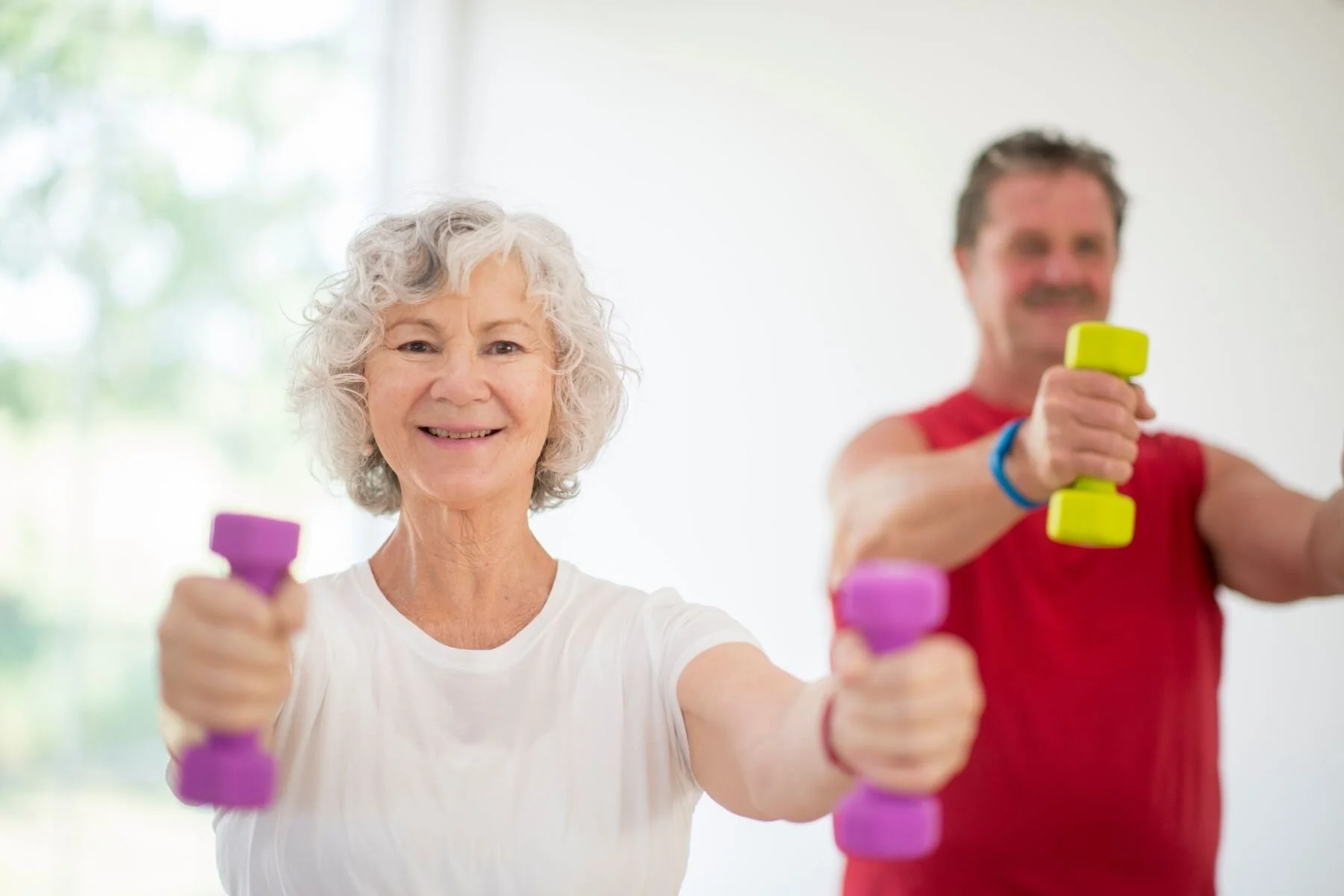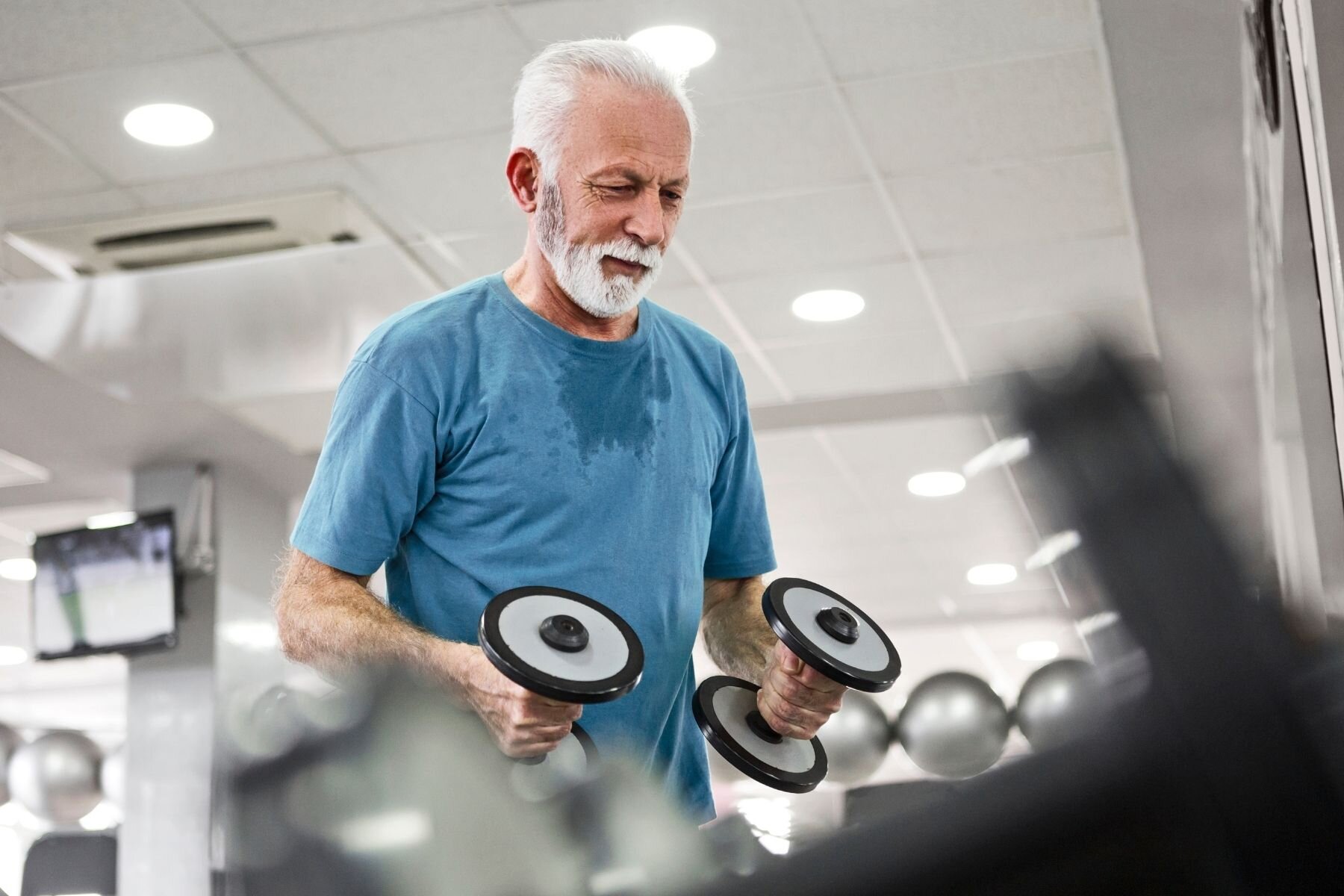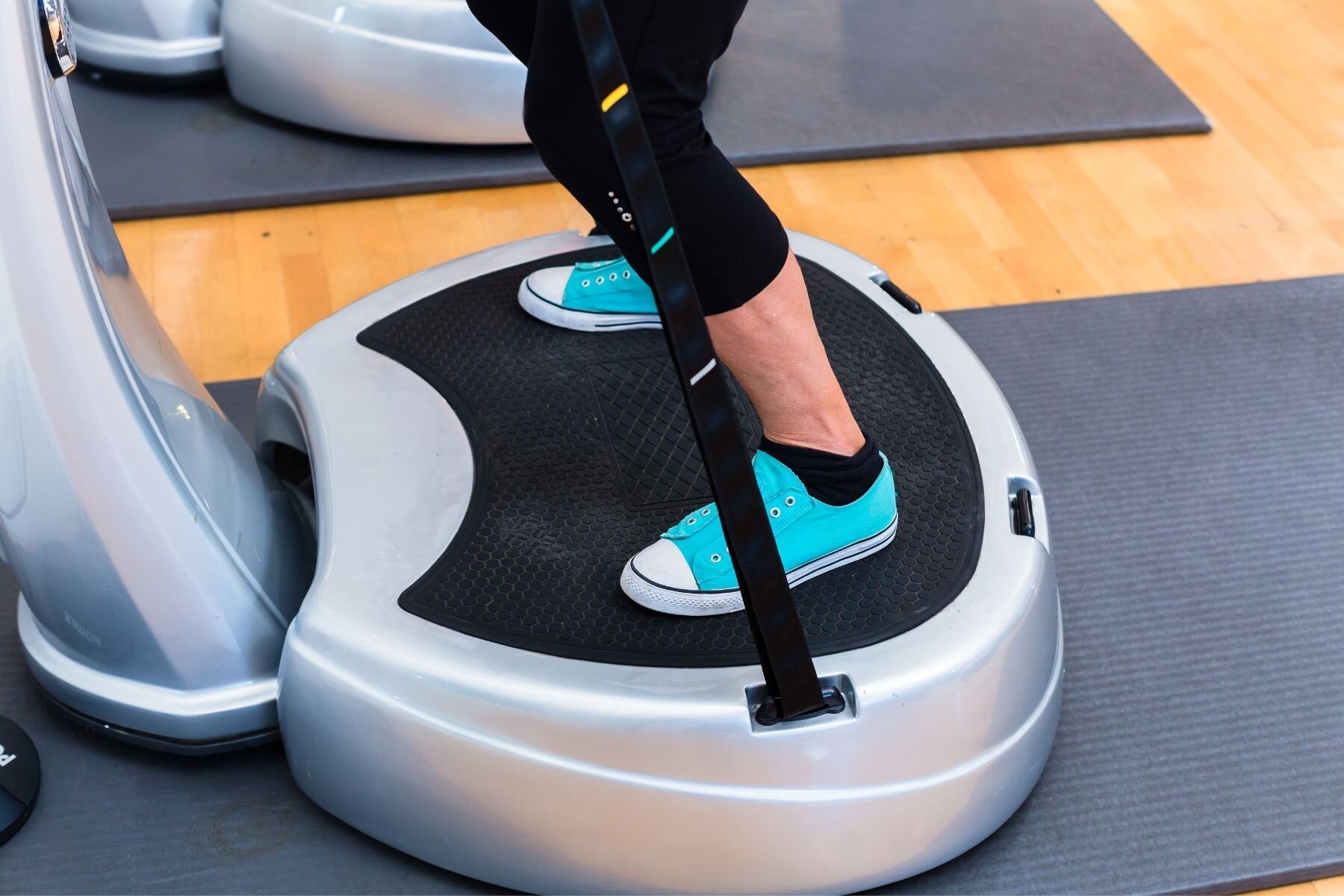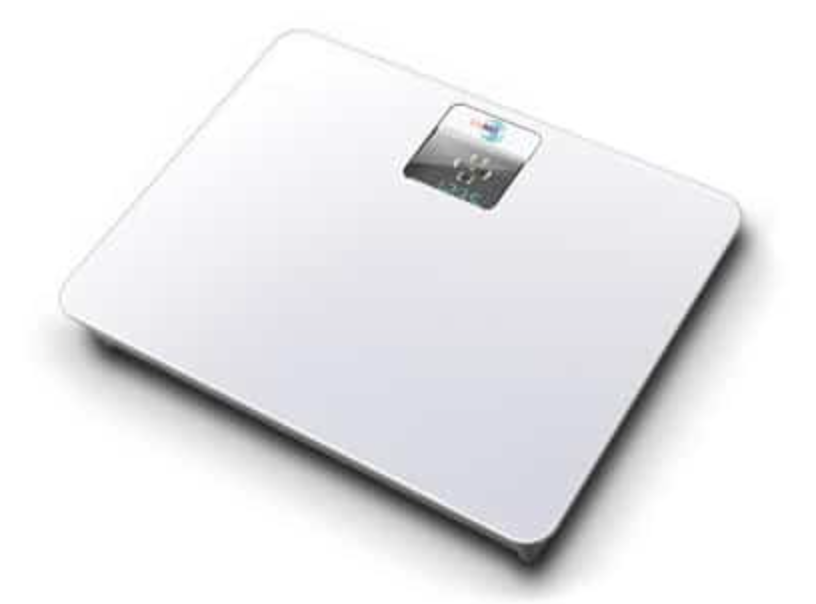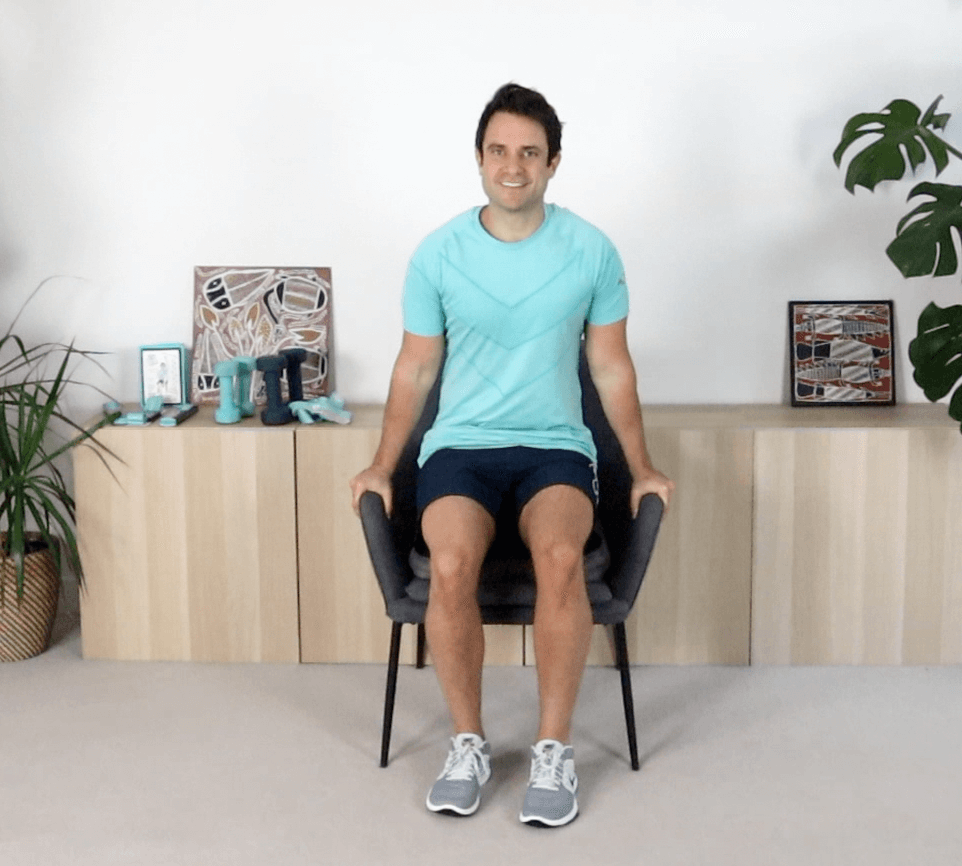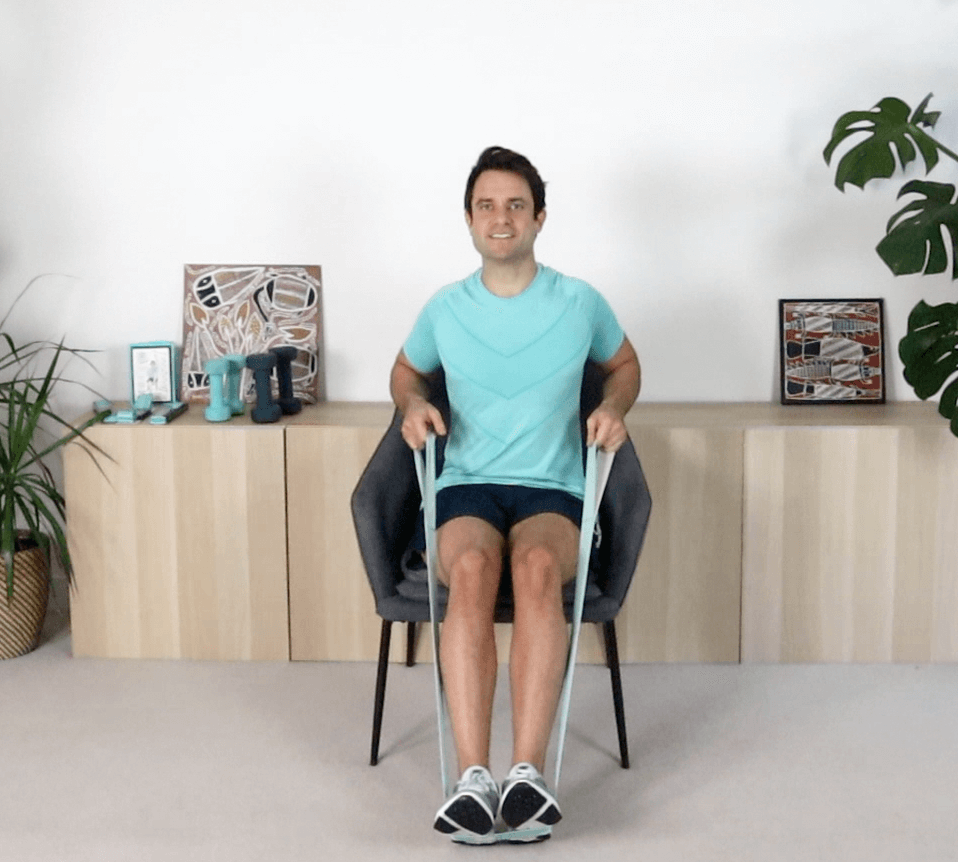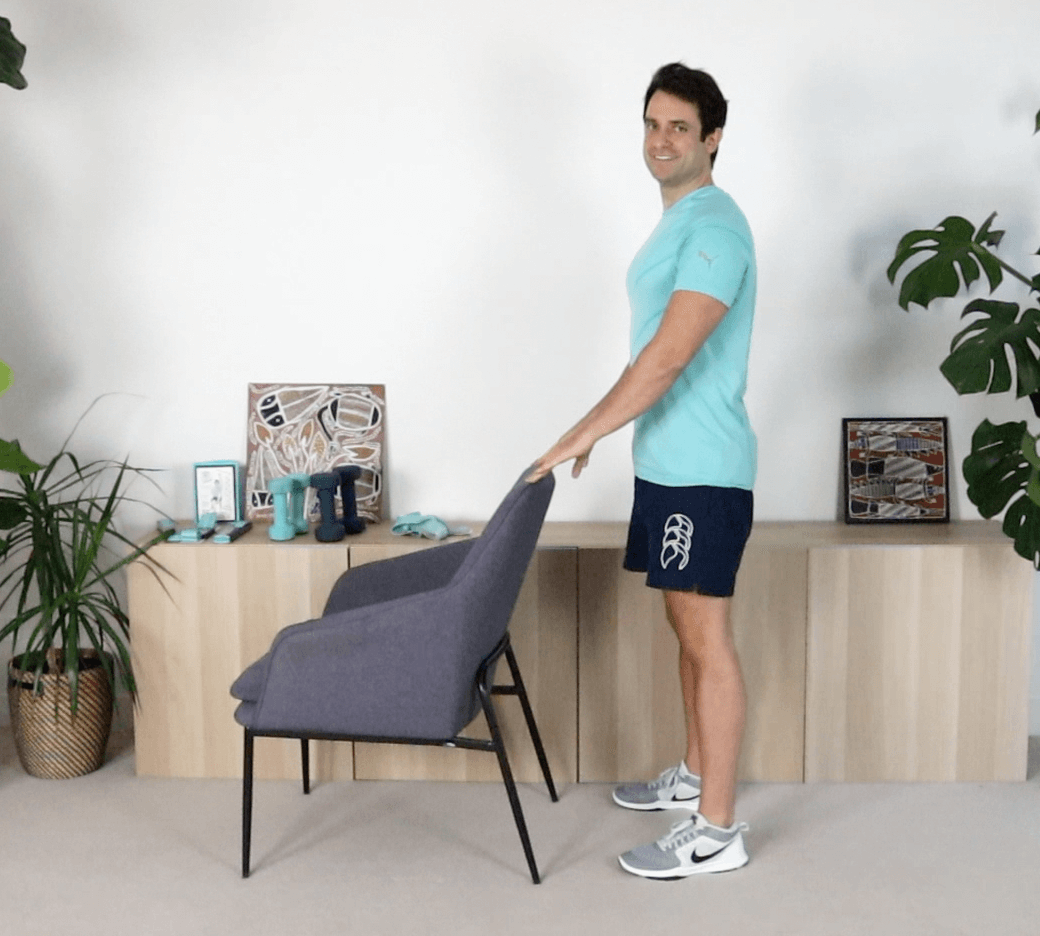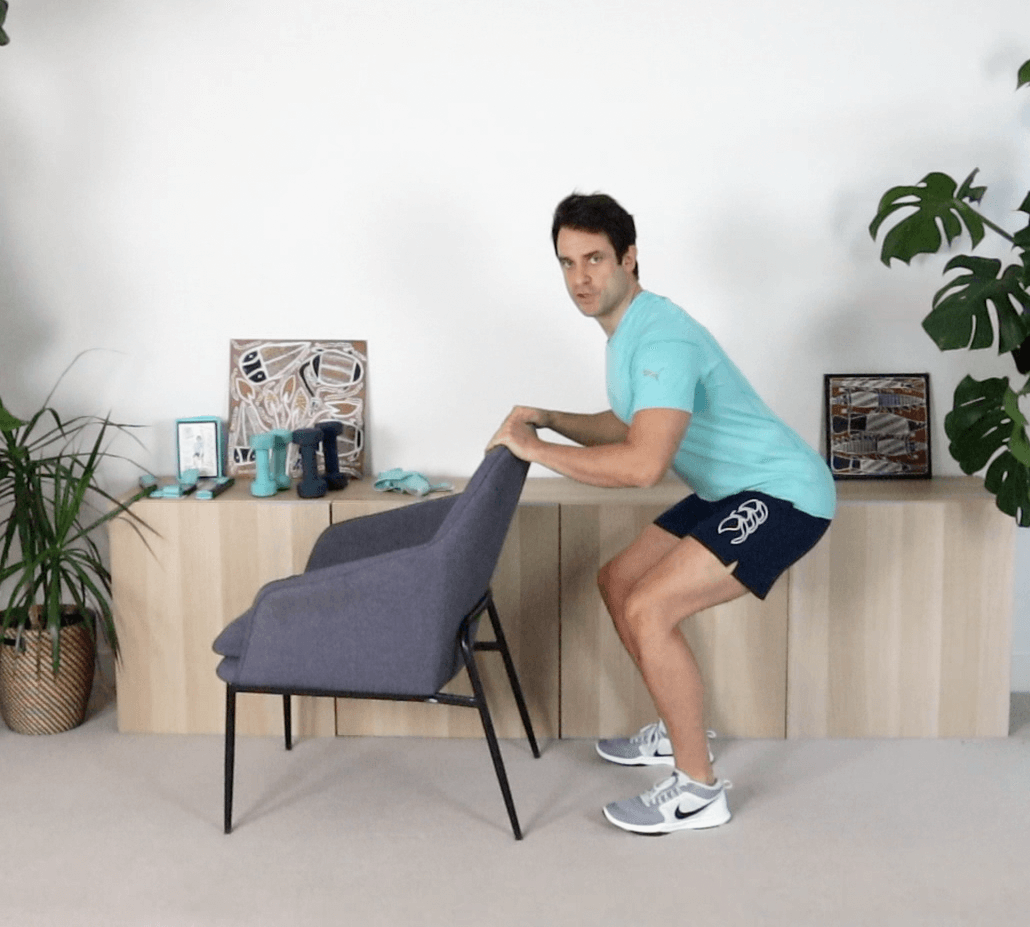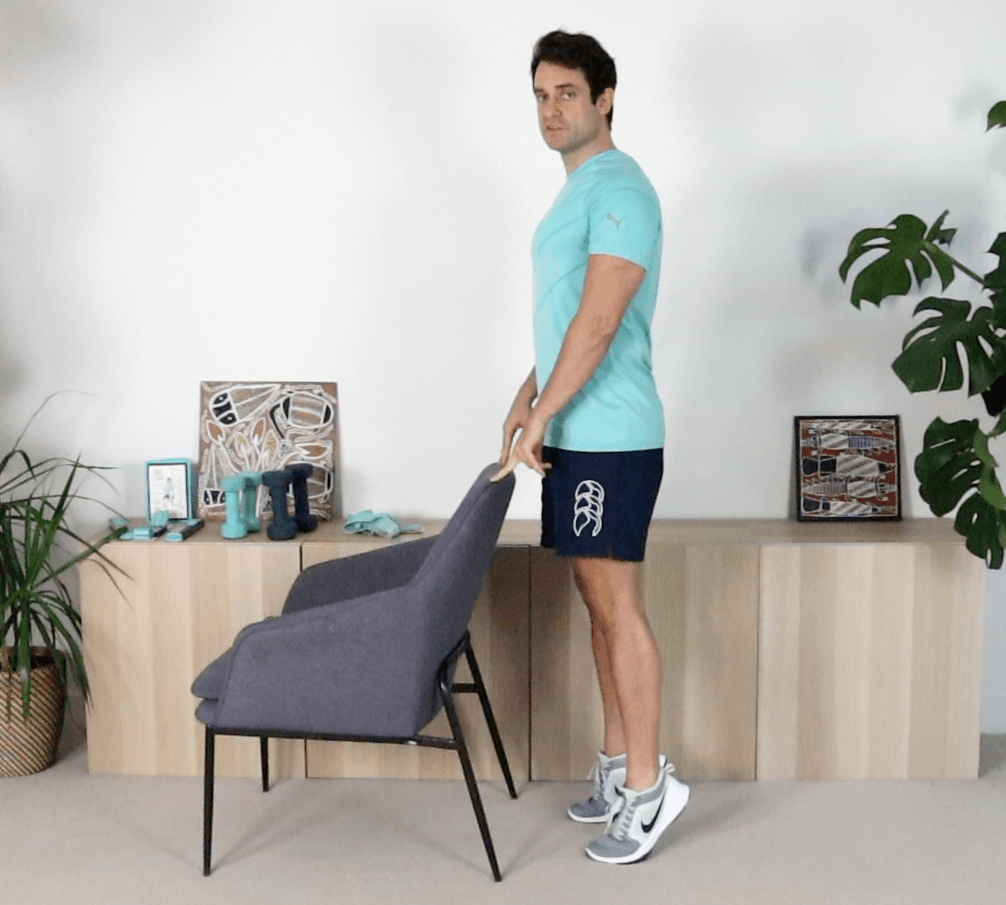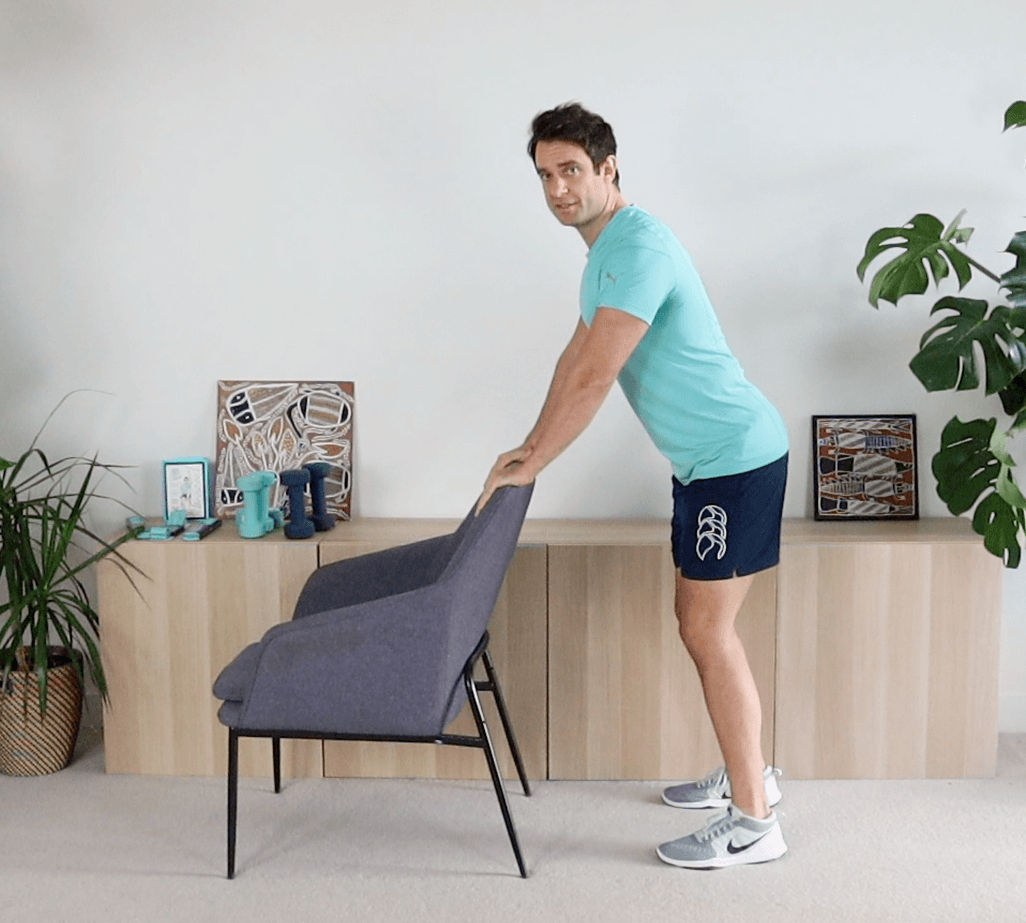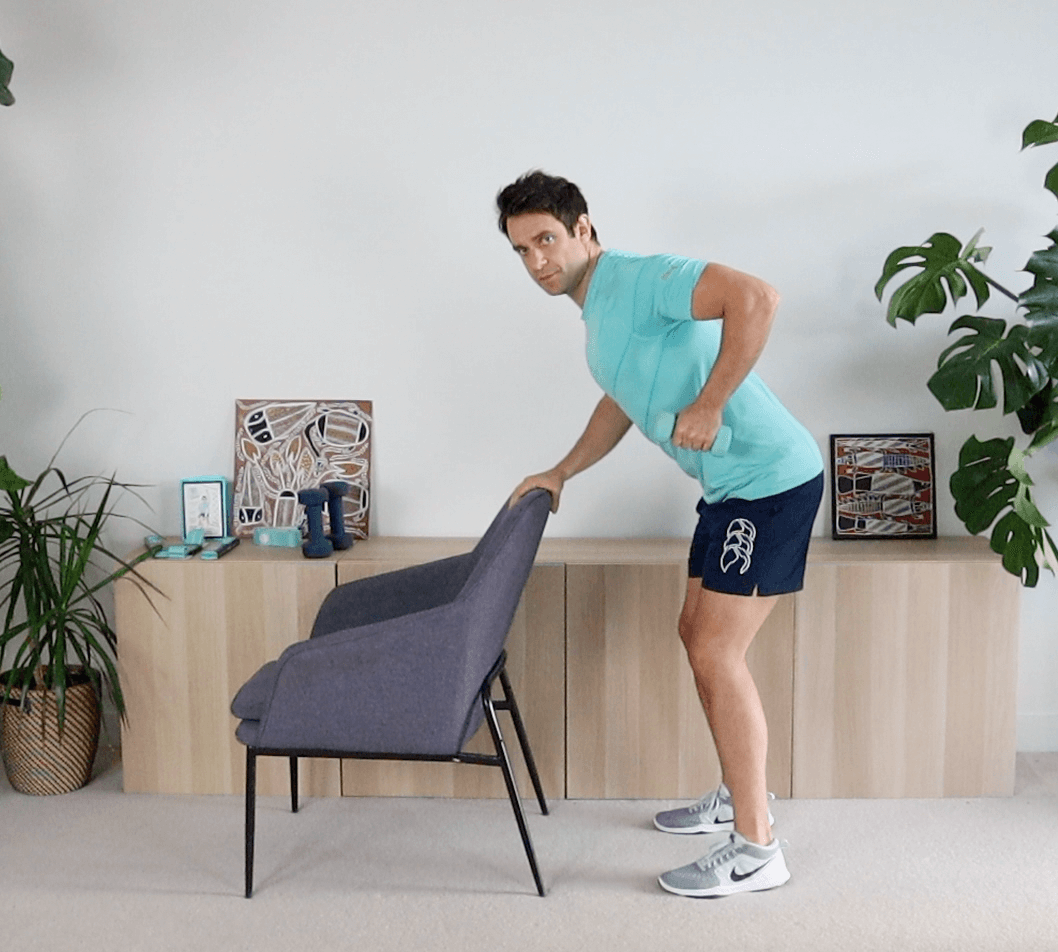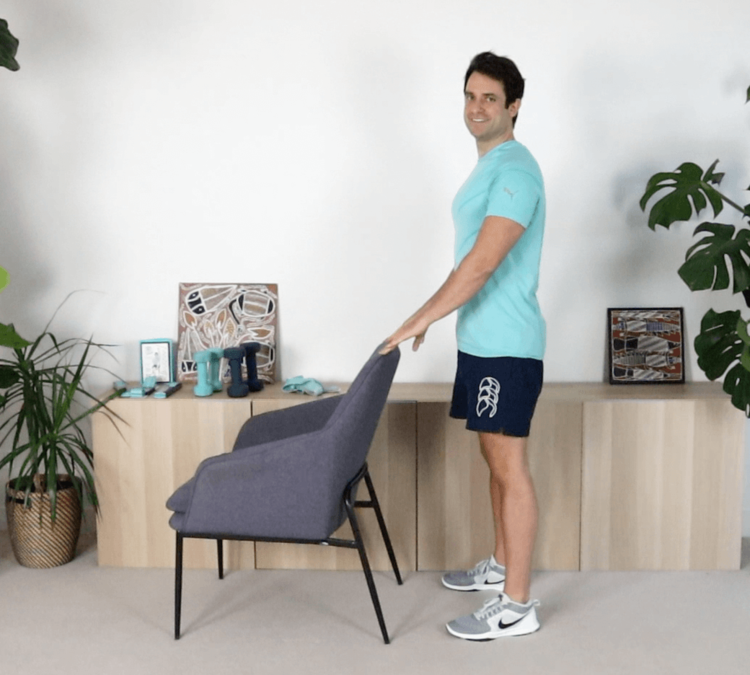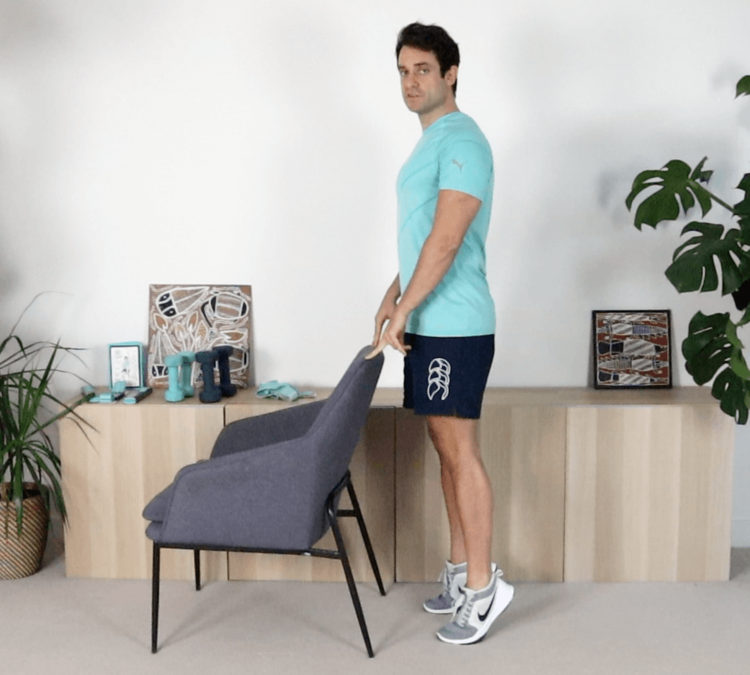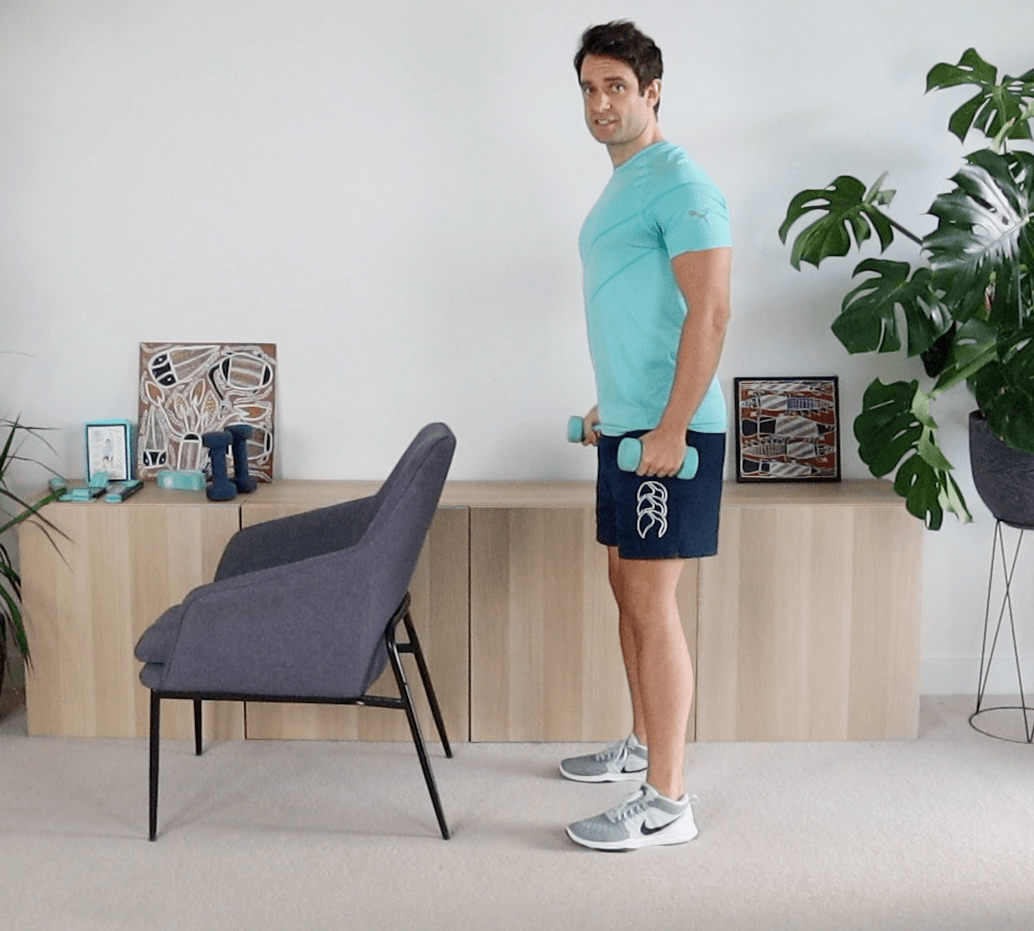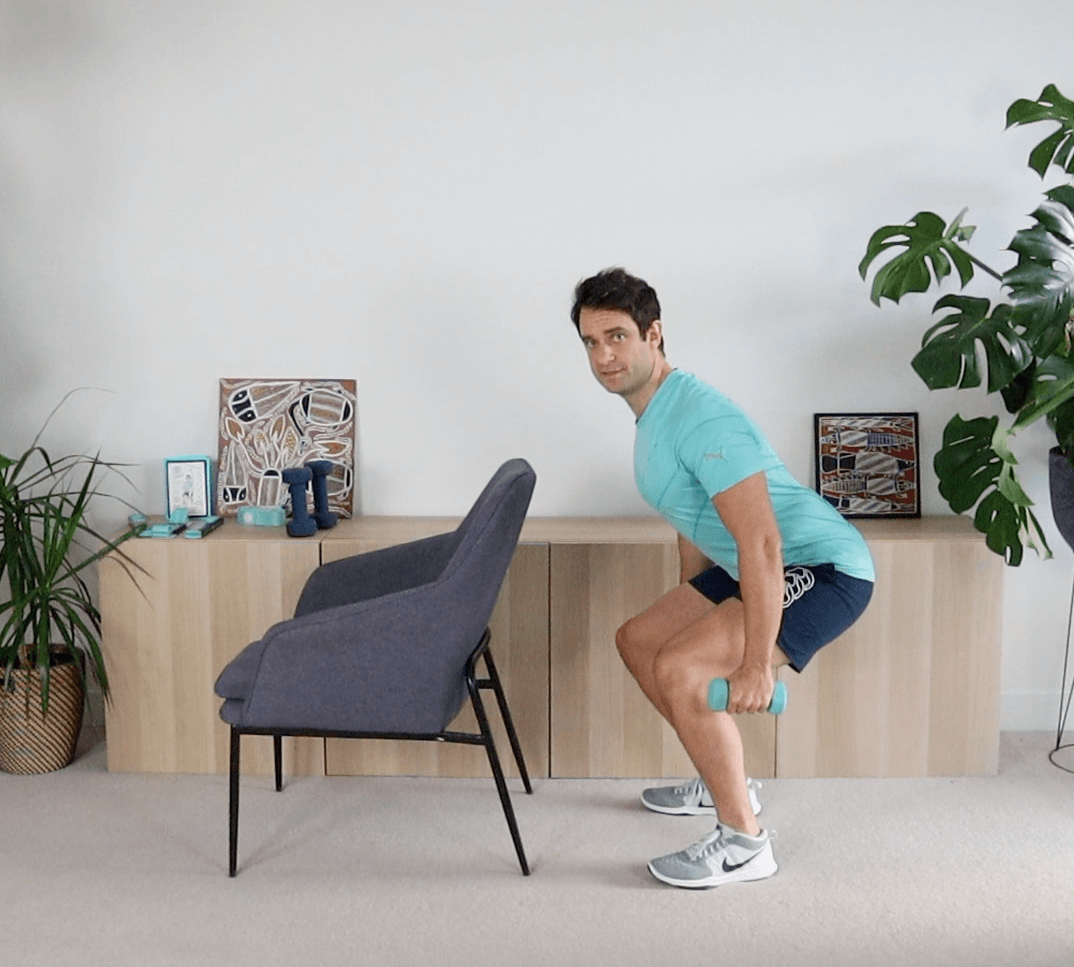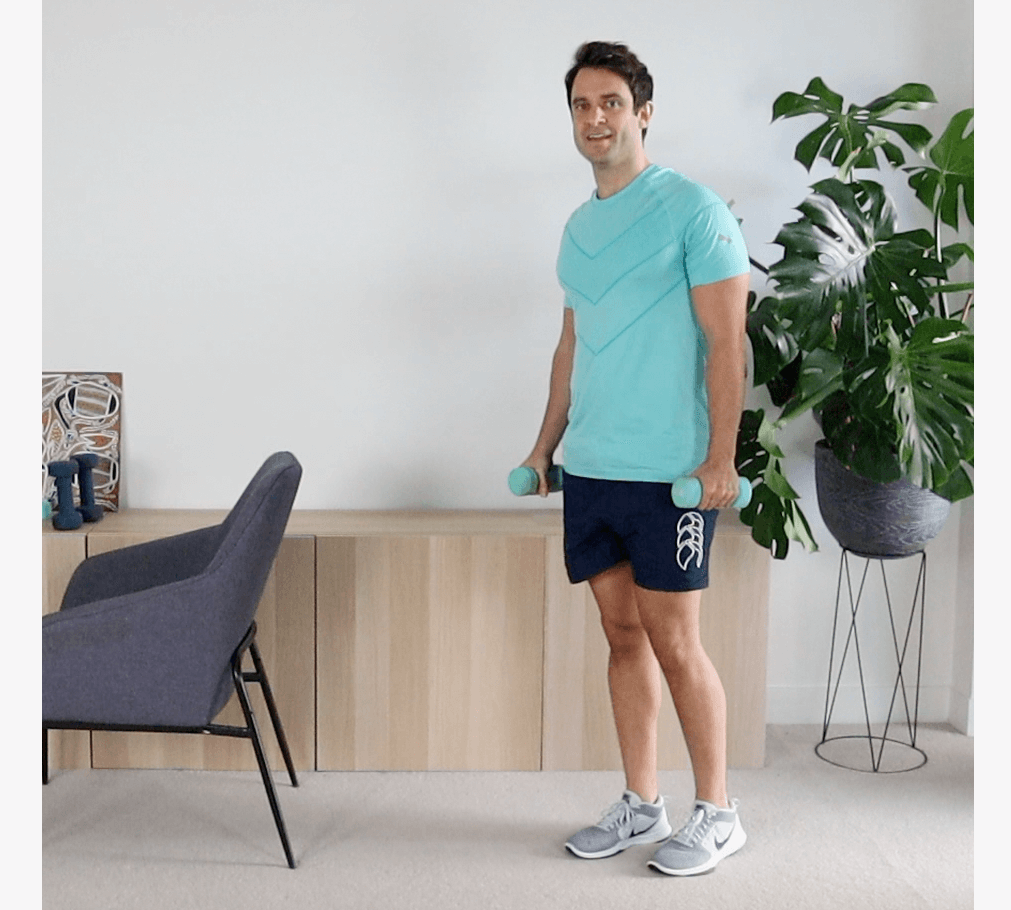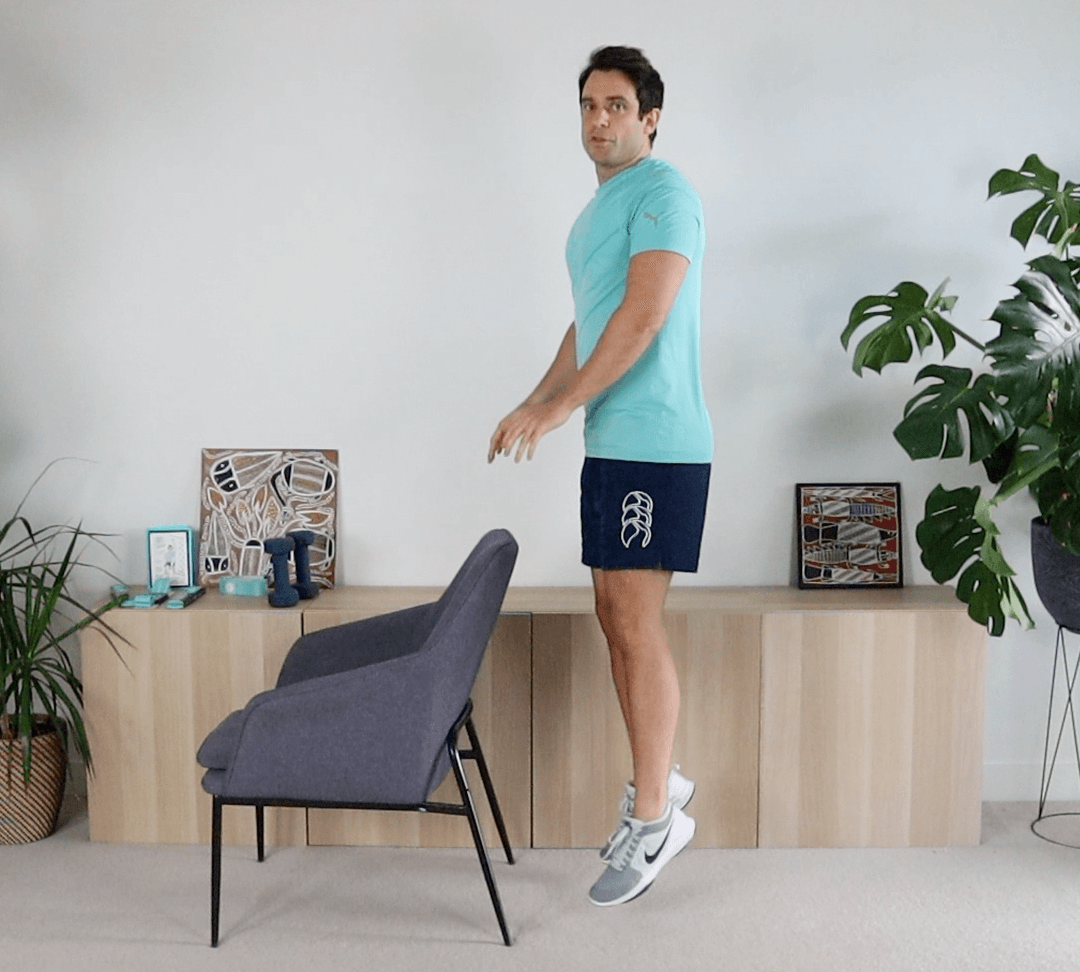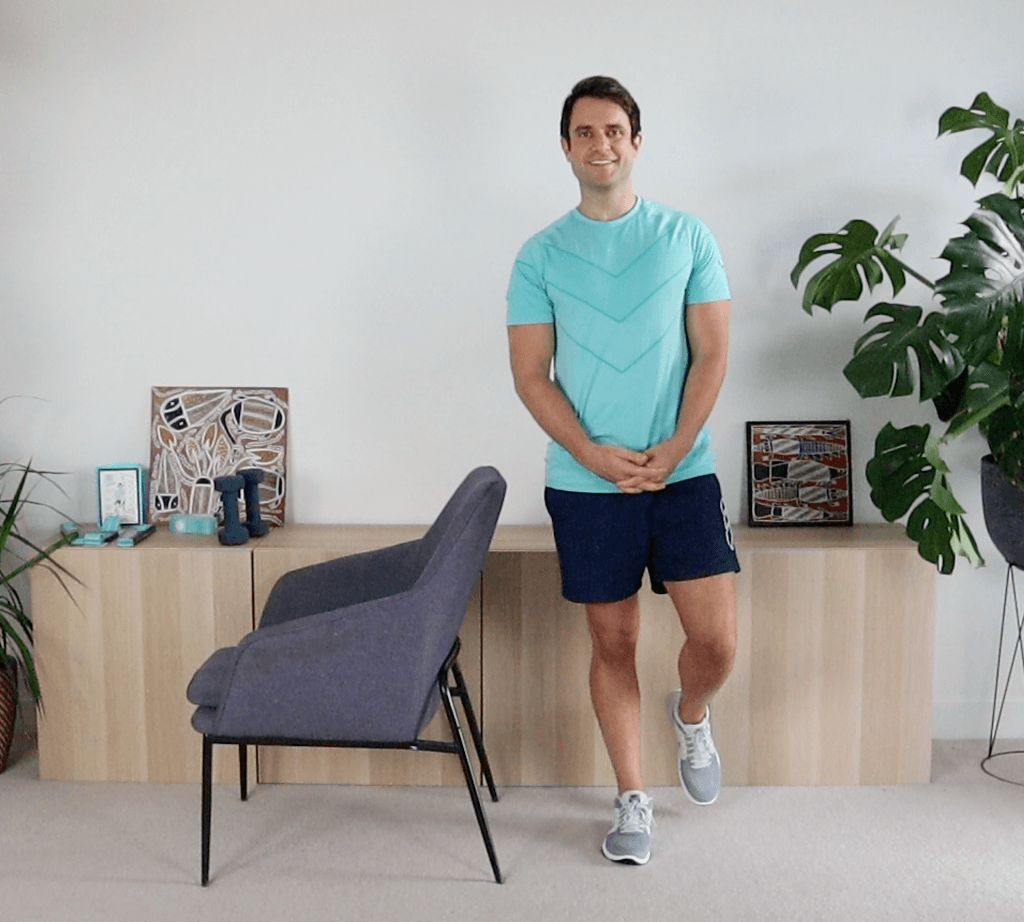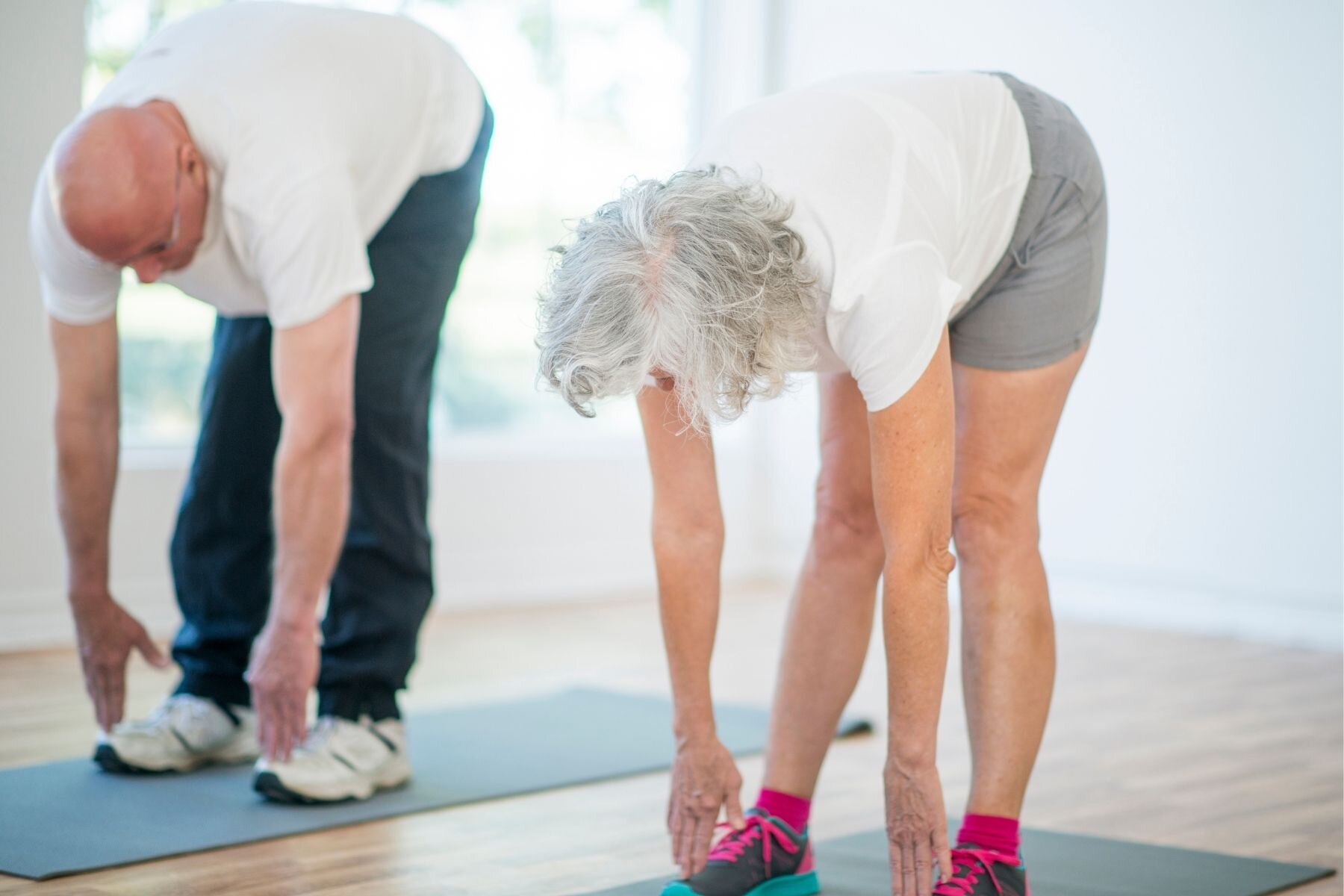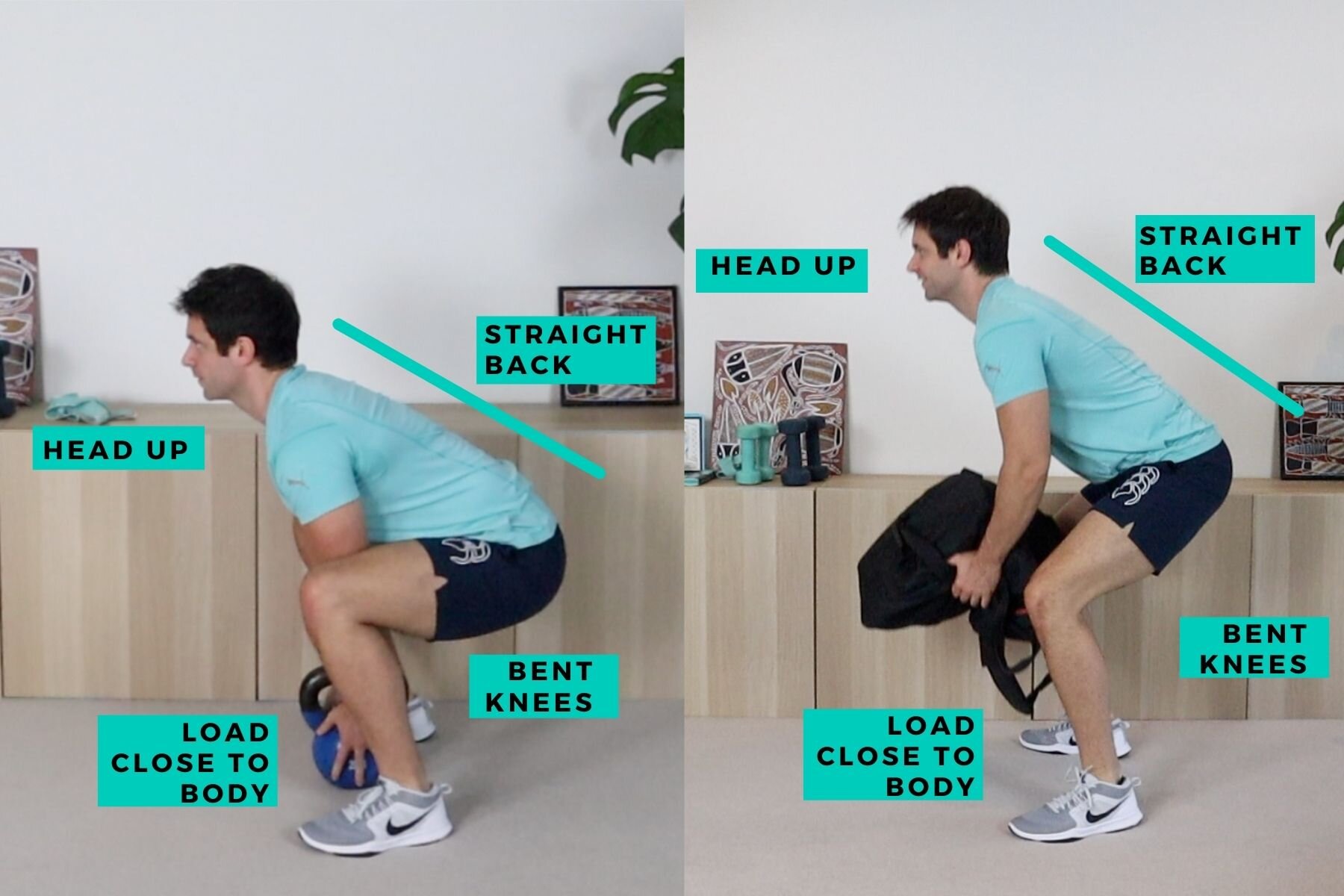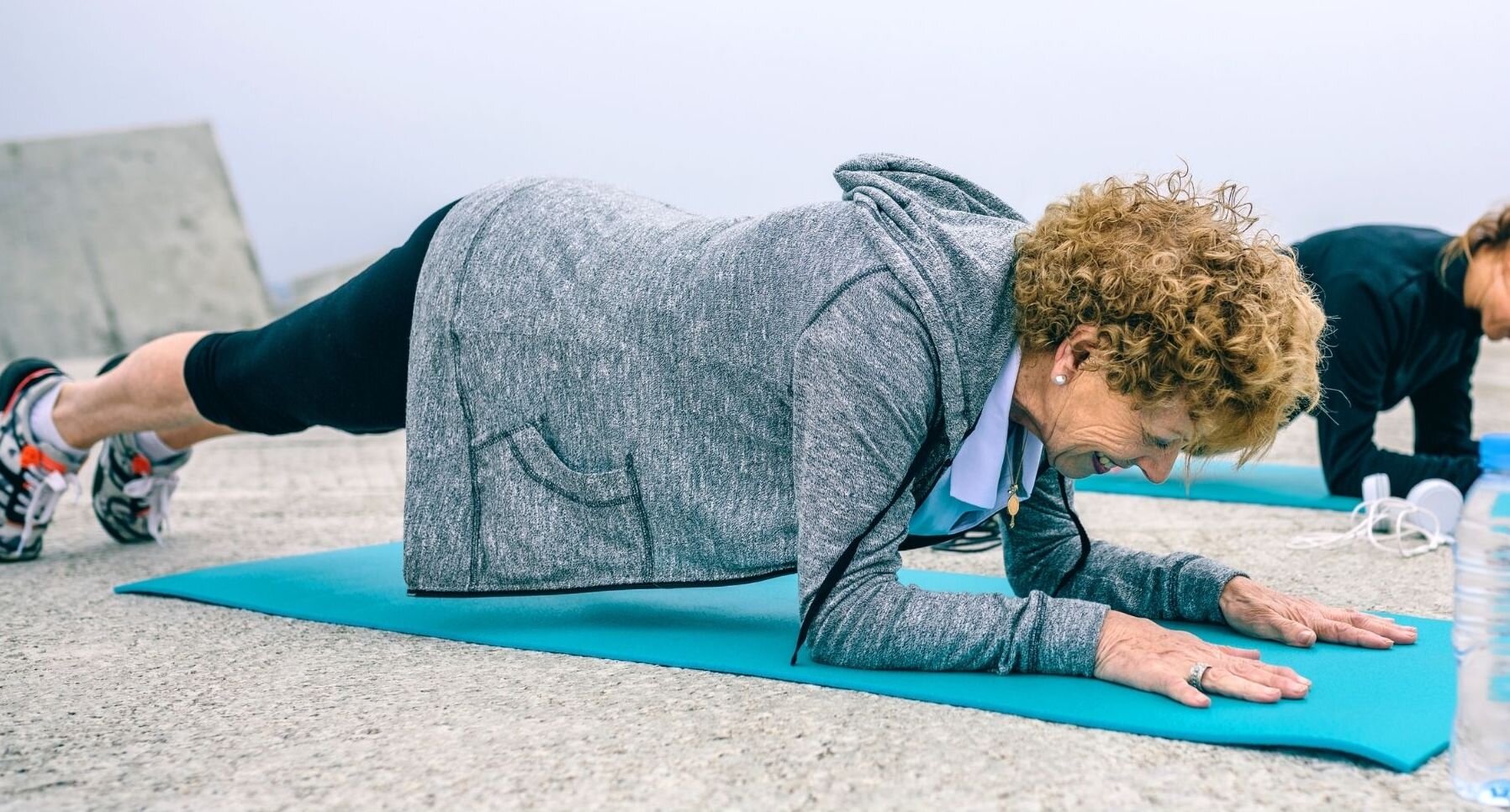The Complete Guide To Strong Bones Over 60 [Part 3]
PART 3: EXERCISE TO DO FOR STRONG BONES
(INCLUDES EXERCISE VIDEOS FOR STRONG BONES)
Along with good nutrition and cutting out factors that could be decreasing bone strength, exercise should be the first line of intervention in the management of osteopenia and osteoporosis. [1]
A proper exercise regime can improve bone strength and help you become more flexible, agile, and limber, which can help prevent falls and decrease any fractures that could occur.
This part of the article will look at the connection between exercise and stronger bones and the types of exercise most beneficial for healthy and strong bones and prevent falls and fractures.
At the end of the article, I'll share some exercise programs (with videos and pictures) for improving bone strength (and muscle strength) which you can follow along to in the comfort of your own home.
Before we get into part 3, however, if you are yet to read part 1 and part 2, it is a good idea to read part 1 and 2 first, which will give you a better understanding of your bones (and how to keep them strong) and will also help you understand this part more.
For PART 1: WHAT YOU NEED TO KNOW TO GET STRONGER BONES
For PART 2: HOW TO EAT FOR STRONGER BONES (AND OTHER FACTORS THAT IMPROVE BONE HEALTH)
Now, let's get into exercise for stronger bones.
WHAT WE’LL BE COVERING IN PART 3:
EXERCISE & BONE STRENGTH: HOW TO EXERCISE FOR STRONGER BONES
THE BEST TYPE OF EXERCISE FOR STRONGER BONES
HOW OFTEN SHOULD YOU EXERCISE FOR STRONGER BONES
EXERCISE PROGRAMS FOR STRONGER BONES/OSTEOPOROSIS
WHAT RESULTS SHOULD I EXPECT BY UNDERTAKING A BONE-STRENGTHENING PROGRAM?
EXERCISE AND BONE STRENGTH - HOW TO EXERCISE FOR STRONGER BONES
In part 1, we discovered that our bones are constantly changing—a constant breakdown of old bone and rebuilding of new bone.
These changes occur gradually in response to the pressure and forces required of them. When we get moving and exercise regularly, our body adapts to the exercise forces by creating denser and more resilient bones.
When we spend less time exercising and less time on our feet, the opposite can occur. Our bones can become weaker!
Any activity where you are putting weight through your feet is known as weight-bearing activity, and it is essential for stronger bones.
Weight-bearing activity puts needed pressure on your bones and challenges your muscle strength against gravity also.
Some examples of weight-bearing activity include walking, jogging, jumping, playing tennis and dancing. On the other hand, seated exercises or swimming are not weight-bearing activities.
The more you can get up, on your feet and active (making sure you are not overdoing it and also supporting your nutritional needs with the right type and amount of food), the more you stimulate your body to produce stronger bones.
GETTING STARTED WITH EXERCISE - BEFORE YOU START
When you've been told you have weaker bones, the thought of exercising can be a little scary. Taking up exercise for the first time can be daunting on its own, even more so if there is a genuine concern for falls and fractures.
For these reasons, seeing a Doctor and Physiotherapist is important before starting a workout routine. Your Doctor or Physio will give you clearance to begin exercise to ensure it's currently safe to go ahead and help clear out any doubts or questions you still might have about any specific activities or exercising in general.
Furthermore, a Physiotherapist can give you professional advice on how to safely and properly undertake exercise.
It's also important when starting a new workout routine to make sure to start slow and build up your exercise gradually, over time, to help avoid any issues. This is particularly important if you have been inactive for an extended period.
If you’re not sure if you are doing too much, the best thing you can do is listen to your body. If things seem off or you feel like you’re overdoing it. Stop and speak to your Physiotherapist.
With any new task, it is always harder in the beginning. After some time staying consistent with the exercises, you will eventually get the hang of everything, and it all becomes much easier.
THE BEST TYPE OF EXERCISE FOR STRONGER BONES
Once you’re ready to get into your exercises, the next step is doing the right type of exercise to produce the best results for strengthening your bones.
So what type of exercise is best for strengthening bones?
There are many types of exercise that can help strengthen bones, and to get the best effects from your exercise, it is more than just targeting the bones alone.
You want an exercise regime that takes into account the many components of fitness.
A regime that not only targets bone strength with weight-bearing exercise (which we will cover below) but also includes muscles strengthening exercises of your whole body. Stronger muscles mean better movement, greater ease of movement, less risk of falls and less strain on those bones.
You also want to improve your flexibility - again, when you are more flexible, you’re going to move much better and have less pain.
Then there are other components of fitness such as aerobic fitness and balance that should be included in your weekly exercise routine. Aerobic fitness and balance are not only weight-bearing activities good for your bones, but they are essential for a healthy body (with a healthy body comes healthier bones) and to decrease your risk of falls.
For stronger bones - exercises should incorporate a mix of the following categories:
Resistance training (using free weights such as dumbbells and barbells, elastic band resistance, body-weight resistance or weight-training machines)
Weight-bearing aerobics exercise (brisk walking, dancing, elliptical training machines)
Exercises to improve balance and posture (balance exercises, chair exercises, tai chi, yoga)
RESISTANCE TRAINING FOR STRONGER BONES
Resistance training, also commonly known as strength training, is a form of exercise focused on improving the strength and size of skeletal muscles.
Weight-bearing exercises are required for bone health, and strength training with relatively heavy weights is known to produce the most effective results.
Studies show that resistance training, either alone or combined with other exercises, could be the most optimal strategy to improve muscle and bone mass in postmenopausal women, middle-aged men, and the older population.
In one study, postmenopausal women with osteoporosis or osteopenia underwent 12 weeks of supervised strength training 3 times a week. The results confirmed that lumbar spine and femoral neck Bone Mineral Content increased by 2.9 and 4.9%.
These are just two of the many studies that show the benefits of resistance training for strengthening bones.
Now, for some of you reading this, you’re probably thinking: “Lifting weights? Is he out of his mind?”
I know the prospect of lifting something heavy, especially if your bones are already weaker, might seem scary, counterproductive... or just downright crazy. But this is the right way to strengthen your bones and is safe when done correctly.
As I already mentioned before, if you’re reluctant to start using weights, it is best to see a Physiotherapist in person to know you’re doing everything correctly, which will help give peace of mind.
You don’t have to jump straight into using weights also. If exercise is new to you, start with other exercises (like the beginner bone-strengthening exercises below), and once everything becomes easier, you can progress to using weights.
You’ll get the hang of this weight-lifting business in no time.
For a whole lot more information on strength training and how to do it right, make sure to read my article: HOW TO GET STRONG AND STAY STRONG AFTER 60 - THE COMPLETE GUIDE.
AEROBIC EXERCISE FOR STRONGER BONES
Combining resistance training with a form of weight-bearing aerobic exercise can further help strengthen those bones and increase the strength and endurance of your muscles, with the additional health benefit of improved cardiovascular fitness.
Weight-bearing aerobic exercise works the bones in your legs, hips, and spine, as they’re designed to support the whole weight of your body.
Examples of weight-bearing aerobic exercise include walking, dancing, jogging and running, among many other activities.
WALKING FOR STRONGER BONES
When we spend a lot of time seated or lying down, the body isn’t getting the signal to produce stronger bones. There is less of a need for it.
For stronger bones, it is important to get up and moving more so.
One way I recommend (especially if you’re just getting started) is by walking more.
As far as aerobic activities are concerned, walking is a great way to burn some extra calories, lower your blood sugar, strengthen the heart, and improve your mood. However, walking alone won’t do as much good when it comes to bones than when added with other exercise types.
Now, don’t get me wrong, everyone has to start somewhere - it could begin just by walking more around your home or a stroll around the neighbourhood. This is much better than spending most of your day seated.
But if you want to strengthen your bones more so, you’ll want to pick up the intensity a little. Instead of a leisurely walk, opting for something more challenging would be a much better choice.
When going out for a walk, consider not only the pace (brisk walking) but also the duration, as well as the difficulty of the terrain (stairs, hills, different surfaces) you’re walking on. Even though walking may not seem like much exercise, just like any exercise, it can be overdone, leading to pain and injury. It’s important you gradually build up the amount of walking you do and give rest days, especially if it has been some time since you have been out and about. Take your time to build a strong foundation.
Also, if you’re at risk of falling, please take appropriate precautions.
For more information on walking (and how to avoid pain and injuries), make sure to read my article: WALKING AND YOU: THE SENIORS GUIDE TO GETTING MORE OUT OF WALKING!
DOES VIBRATION THERAPY IMPROVE BONE STRENGTH?
As the name suggests, vibration therapy relies on transmitting mechanical vibrations through a device (which the user stands on), causing the vibrations to go through the user’s body.
These vibrations cause the muscles to contract and relax while also applying forces through the bones. It is suggested that the continuous vibrations increase bone strength by increasing bone formation and decreasing bone resorption. [2]
Whole-body Vibration Platform
Vibration therapy was first developed by scientists as a tool to potentially keep the bones strong of astronauts after spending some time in the zero-gravity, non-weight-bearing conditions of space. This time spent in space was causing accelerated muscle and bone loss.
The vibrating platform was designed to be used for 10-15 minutes per day and hoped to help regain some of the lost bone and muscle mass.
Today, there are two types of vibration therapy used to potentially strengthen bones: Whole Body Vibration (WBV) and Low-Intensity Vibration (LIV).
WHOLE-BODY VIBRATION uses a larger platform on which the user stands whilst holding onto handles. The vibration speed and intensity of the vibrations on this machine can be varied - up to high intensities.
Studies have shown mixed results on bone strength.
Many studies reporting beneficial effects on bone mineral density, muscle strength and falls prevention. [3, 4, 5].
Conversely, some studies also showed that WBV has little effect on bone mineral density and that weight-bearing physical exercise is superior for bone health [6, 7].
Depending on your level of osteoporosis, whole-body vibration, with its increased intensity of vibrations, may cause more harm than good and are not recommended in some cases.
There are also potential contraindications for using whole-body vibration. These include joint implants, retinal detachment, fresh surgical wounds, having a pacemaker or cochlear implants.
LOW-INTENSITY VIBRATION THERAPY, on the other hand, is a smaller platform that looks like digital weight scales and can be used by anyone and is much safer. These platforms are designed for this reason. It is still best to check with your Doctor or Physiotherapist first before using or purchasing a LIV platform.
Again research on both animal and human studies have shown mixed results with the use of LIV therapy, with some animal and human studies showing potential benefits, on bone and muscle mass and falls prevention.
Due to the fact, these platforms have fewer adverse effects than high-intensity vibration devices and have shown beneficial results, low-intensity vibration devices are recommended over whole-body vibration devices.
Although vibration therapy is still a relatively new and unexplored medium, and the definite dose of what’s best to stimulate bone growth has not been defined, there is evidence of its effectiveness in improving muscle and bone strength.
If you have difficulty undertaking weight-bearing exercise or are unable to do so, or would just like another way to help keep your bones stronger, you may want to trial vibration therapy. Vibration therapy, however, should not be used as the sole form of treatment for increasing bone and muscle strength.
As with any exercise, ensure you speak to your doctor before using a vibration device.
If your doctor has given you the all-clear to use one of these devices, speak to an appropriate professional who can help you get started and safely progress.
Build up the amount of time gradually (and the intensity of vibrations), and depending on your capabilities. This will allow your body to adapt without causing issues.
IS SWIMMING AND WATER EXERCISE GOOD FOR BONE STRENGTHENING?
A common question I get asked is, “does swimming help with stronger bones?”
Since water-based activities are performed in a low gravity environment (non-weight-bearing), they don’t put much stress on your bones, which means you are not getting the bone-building benefits.
Although with swimming and other water activities (hydrotherapy, aqua aerobics etc.), you are getting less of the forces needed to promote bone strengthening. These activities still make for good cardiovascular training, which is good for overall health.
They also help reduce stress on weight-bearing joints if you have painful joints, can help increase mobility, muscle strength and improve balance and posture. If this is a type of exercise you enjoy doing, it has many health benefits. So keep it up, but if your aim is for stronger bones, make sure to be doing other forms of weight-bearing exercise.
HOW OFTEN TO EXERCISE FOR STRONGER BONES
The goal is to implement more movement into your daily routine and to build this up over time.
An effective exercise program includes a combination of aerobic activity, resistance training, and balance and stretching exercises.
Below are suggested exercises to undertake weekly to help improve bone strength. However, if new to exercise, you should not begin with this much exercise.
Gradually build up the number of sessions you do (and time), and it’s also essential to fuel your body with the correct nutrition (as discussed in Part 2).
Resistance training - 3x per week (multi-joint exercises)
Aerobic activity - 2-3x per week - 45 min to 1 hour (E.G. walking, jogging, dancing)
Balance and stretching - 2 to 3x per week - 30 to 45 min
Ideally, weekly physical activity should include something from all three exercise groups.
EXERCISE PROGRAMS FOR STRONGER BONES/OSTEOPOROSIS
When exercising with osteoporosis (or for stronger bones), you must challenge the areas of your body commonly affected (E.G hips and spine).
Exercises should target both the lower body and the upper body and consist of weight-bearing exercises.
Exercises should be made up of compound movements (squats, lunges, push and pull movements) that load the bones of the legs, hip, spine and arms, target major muscle groups of the whole body and are functional for everyday life.
Below we will go through some exercises you can do to help promote bone strength.
EXERCISES TO PROMOTE BONE AND MUSCLE GROWTH BEGINNER EXERCISES
CHAIR DIPS
EXERCISE DESCRIPTION
Sitting forward in your chair, shuffle forward to the middle of the chair.
Place your hands on the side of the chair near your hips or on the armrests.
Lean slightly forward at the hips keeping your back straight.
Now press through your hands, straightening your elbows and lifting your buttocks off the chair, if you can.
Slowly lower your buttocks back to the chair by bending at your elbows.
Repeat for 10-12 Repetitions.
MUSCLES WORKED
Triceps (back of upper arms), Deltoids (shoulders), Chest
SEATED ROWS - WITH RESISTANCE BANDS
EXERCISE DESCRIPTION
Place the resistance band underneath your feet, and hold onto it at each end.
Now sit up tall in your chair and extend your arms out in front of you, at the same angle of the resistance band
Now pull your elbows back behind you, squeezing your shoulder blades together at the end of the movement.
Remember to keep your chest up throughout this exercise.
Return to the start position
Repeat for 10-12 repetitions.
MUSCLES WORKED
Arms, Shoulders & Back.
EXERCISE DESCRIPTION
Sitting up tall in your chair, with your feet shoulder-width apart.
Shuffle forward to the front of your chair.
From this position, bringing your feet back so your heels are behind your knees.
With your hands on the chair, on the arm-rests of the chair, or on your thighs, you’re going to lean forward at the hips, so your nose comes over your toes.
Now stand up, putting equal weight through both feet/legs.
Make sure you fully extend your legs at the knees and the hips.
And to sit down, hinging at the hips, reaching for the chair and sitting down.
Make sure to keep your chest up throughout the exercise.
Also, make sure that your knees remain in line with your toes, and they don’t move inwards when you sit down and stand up.
NOTE:
To further challenge yourself, trying placing your arms across your chest or using a lower chair.
To make this exercise easier, use a higher chair.
Repeat for 10-12 repetitions.
MUSCLES WORKED
Buttocks (glutes), thighs (quads), hips, calves, core and back.
PARTIAL LUNGES
EXERCISE DESCRIPTION
Start by standing up tall, holding onto your chair with one hand.
Step forward with one foot, and drop the back leg slightly towards the ground.
Stand up, putting weight through the front lunging leg and return to the starting position.
Make sure your front knee remains in line with your toes throughout the movement.
Repeat for 10-12 repetitions, each leg, alternating.
MUSCLES WORKED
Buttocks (glutes), thighs (quads), hips, calves, core and back.
EXERCISE DESCRIPTION
Standing up tall with your feet shoulder-width apart. Toes can be facing forward or slightly outwards.
Holding onto your chair with both hands or keep your arms out straight in front for balance.
Engage your core, hinge (bend) at the hips and sit back as you would if you were to sit on a chair.
As you sit back, keep your chest up and your core tight and go no lower than 45 degrees.
As you stand back up, put equal weight through both legs, ensuring your heels remain on the floor throughout.
Make sure your knees stay in the line of your toes, they don’t go forward past your toes, and they aren’t moving inward throughout the exercise.
Repeat for 10-12 repetitions.
MUSCLES WORKED
Buttocks (glutes), thighs (quads), hips, calves, core and back.
EXERCISE DESCRIPTION
Standing up tall with your feet about hip-width apart.
Keeping your knees straight and holding onto the chair with both hands.
Coming up onto the toes, raising your heels up off the floor, holding briefly and slowly lowering yourself back down.
Repeat for 10 -12 repetitions.
MUSCLES WORKED
Back of lower legs (Calves).
STOMPS
EXERCISE DESCRIPTION
Start by standing up tall, holding onto your chair with one hand.
Bring your knee up and stomp your foot, making sure your whole foot is in contact with the ground.
Imagine as if you are crushing an insect below your footRepeat for 8 repetitions.
BALANCE - SINGLE LEG STANCE - HOLDING
EXERCISE DESCRIPTION
Standing next to a chair for safety and stability.
Stand on one leg.
Hold this position for 45 seconds on each side. Improving every time you attempt this exercise.
When you have completed the set time, change feet.
BEGINNER EXERCISE PROGRAM TO PROMOTE BONE STRENGTH (VIDEO)
Beginner Exercise For Stronger Bones
EXERCISES TO PROMOTE BONE AND MUSCLE GROWTH - INTERMEDIATE EXERCISES
EXERCISE DESCRIPTION
Stand up tall, facing your chair
Place both hands on the chair, bringing your feet out about 1-2 feet from the chair.
Bend forward at the hips keeping your back straight and the core tight.
With a slight bend in the knees, bend your elbows, bringing your chest towards the chair.
Now straighten your arms bringing your chest away from the chair.
Make sure your chair is secure throughout.
To make the exercise harder, you can bring your feet further away from the chair.
For an easier variation, do the wall push-up.
For a more challenging variation, this exercise can be done on the floor. I.E. modified push-up on your knees or standard push-up (dependent on your capabilities).
MUSCLES WORKED
Chest, Arms, Shoulders, and Core
STANDING BENT OVER ROWS - WITH HAND WEIGHTS
EXERCISE DESCRIPTION
Stand up tall next to your chair, with one hand holding onto a light hand weight and the other hand holding onto the chair.
Now take a step back from the chair, with a slight bend in the knees, hinge at the hips, bend forward with your back straight and place your arm holding the hand weight by your side, keeping it straight.
Now bending at the elbow, pull your arm up, leading with the elbow, behind your back, and return to the start position.
Squeeze your shoulder blades together when lifting your arm up.
Repeat for the set repetitions and change arms.
MUSCLES WORKED
Back, Arms, Shoulders, and Core
SIT TO STANDS WITH HAND WEIGHTS
EXERCISE DESCRIPTION
Sitting up tall in your chair, with your feet shoulder-width apart.
Shuffle forward to the front of your chair.
From this position, bring your feet back so your heels are behind your knees.
With your hands by your sides, holding onto the hand weights, you’re going to lean forward at the hips so your nose comes over your toes. Keep your chest up and your back straight.
Now stand up, putting equal weight through both feet/legs.
Make sure you fully extend your legs at the knees and the hips.
Follow this in reverse to sit down, sticking your bum out before sitting down stand back up to the standing position.
Make sure to keep your chest up throughout the exercise.
Also, make sure that your knees remain in line with your toes, and they don’t move inwards when you sit down and stand up.
Repeat for 10-12 repetitions.
MARCHES WITH STOMPS - MORE INTENSITY
EXERCISE DESCRIPTION
Start by standing up tall, holding onto your chair with one hand.
Bring your knee up and stomp your foot, making sure your whole foot is in contact with the ground.
Imagine as if you are crushing an insect below your footRepeat for 10-12 repetitions, alternating legs.
CALF RAISES WITH HAND WEIGHTS
EXERCISE DESCRIPTION
Standing up tall with your feet about hip-width apart.
Holding onto some light hand weights with your arms by your side or onto the chair if you are unable to do the exercise with the hand weights.
Keeping your knees straight and holding onto the chair with both hands.
Coming up onto the toes, raising your heels up off the floor, holding briefly and slowly lowering yourself back down.
Repeat for 10 -12 repetitions.
If you do not have the required balance for this exercise, complete it by holding onto the chair or without the hand weights.
MUSCLES WORKED
Back of lower legs (Calves).
SQUATS WITH HAND WEIGHTS
EXERCISE DESCRIPTION
Standing up tall with your feet shoulder-width apart. Toes can be facing forward, or slightly outwards.
Holding onto some light hand weights with your arms by your side.
Engage your core, hinge (bend) at the hips and sit back as you would if you were to sit on a chair.
As you sit back, keep your chest up and your core tight and go no lower than 90 degrees.
As you stand back up, put equal weight through both legs, ensuring your heels remain on the floor throughout.
Make sure your knees stay in the line of your toes, they don’t go forward past your toes, and they aren’t moving inward throughout the exercise.
Repeat for 10-12 repetitions.
MUSCLES WORKED
Buttocks (glutes), thighs (quads), hips, calves, core and back.
EXERCISE DESCRIPTION
Standing up tall, holding on to your hand weights
Take a step forward and gently drop your knee down towards the floor, stopping just before the floor.
Stand up, putting weight through the front lunging leg and return to the starting position.
Come back up and repeat for the opposite leg.
Keep your body upright throughout the exercise, ensuring the knee of your front foot does not come past the line of your toes.
Make sure your front knee remains in line with your toes throughout the movement.
Repeat for 5 repetitions each leg.
MUSCLES WORKED
Buttocks (glutes), thighs (quads), hips, calves, core and back.
JUMPS
EXERCISE DESCRIPTION
Standing up tall or holding onto a chair or rail. Do not try and jump too high.
Jump and repeat for 10-12 repetitions.
BALANCE - SINGLE LEG STANCE
EXERCISE DESCRIPTION
Standing next to a chair for safety and stability.
Stand on one leg.
Hold this position for 45 seconds on each side. Improving every time you attempt this exercise.
When you have completed the set time, change feet.
CAT / COW STRETCH
A gentle stretch for the back
EXERCISE DESCRIPTION
Kneeling on the floor, legs at 90 degrees to your body and your hands underneath your shoulders.
Round your back, pulling your abdominals into your spine, gently pushing your midback toward the roof.
Now move your belly forward and gently arch your back, and gently look up to the ceiling.
Repeat for 5 repetitions - nice, slow and controlled feeling the stretch.
FOR OTHER EXERCISE VIDEOS TO HELP
MAKE SURE TO SUBSCRIBE TO THE MORE LIFE HEALTH YOUTUBE CHANNEL
CLICK FOR MORE EXERCISE VIDEOS FOR SENIORS
INTERMEDIATE EXERCISES FOR IMPROVING BONE STRENGTH (VIDEO)
Intermediate Bone Strengthening Exercises For Seniors
WHAT RESULTS SHOULD I EXPECT BY UNDERTAKING A BONE STRENGTHENING PROGRAM?
Stronger bones are not built in a night. The same goes for other aspects of fitness.
Our body reacts to consistent efforts - the more we exercise, the more our body changes and adapts. With gradual progressions (I.E., continuously challenging yourself as you get stronger and your fitness improves), your body will continue to change and adapt.
Completing one workout session is a step in the right direction, but only after some time staying consistent with the exercise, you start noticing the changes.
To know exactly what results to expect is difficult. Everyone is different, and as we have covered through this 3-part article, there are many factors that contribute to stronger bones.
Long-term commitment to exercise (combined with what was covered in part 2) is the way to build stronger bones and prevent fractures.
EXERCISES TO AVOID WITH OSTEOPOROSIS
By now, you'd understand the importance of exercise in the pursuit of stronger bones, but it's quite possible that you still hold some reservations toward the idea - and that's understandable. The thought of brittle bones, fractures, and injuries doesn't make it easy to get into exercise with a lot of confidence.
Having fears and apprehensions is normal, especially if exercise has never played a big part in your life, and especially if you have had past fractures.
However, avoiding exercise is not the answer.
Having low bone density, a previously broken bone, or a diagnosis of osteoporosis doesn't mean every move or activity will cause a fracture.
As touched on earlier, seeing a Physiotherapist can help out with an individualised exercise program, and they can take you through how to do the exercises correctly. They can also let you know when it is time for you to move forward with all your exercises, which allows for continued progress.
It's also imperative that you understand what exercises to avoid if you have osteoporosis which may put you at risk of fractures.
This section is here to guide you through some movements to avoid and some safe alternatives, which will hopefully help alleviate some of the fears and reservations you might have. What you're about to read aren't strict rules and shouldn't be treated as such; consider these words as recommendations.
Hopefully, by the end of this chapter, you'll feel more confident and prepared to tackle whatever comes next.
Increased spinal flexion
BENDING FORWARD
Bending forward (known as spinal flexion), for example - to tie your shoes or pick up a dropped object, is generally a safe movement. However, this action may be putting excess strain on your spine.
One of the most common causes of back issues is bending forward while holding a heavy object; this action puts an uneven weight on the spine and could increase the risk of fractures.
Like with any other movement, it's important to be conscious and aware of this movement and avoid rounding your back as much as possible.
You also want to avoid bending suddenly or repetitively in an uncontrollable manner and twisting in this position.
Keep your back straight, bend your knees, and do exercises to keep your back and core muscles as strong as possible.
COMMON BENDING FORWARD POSTURE - UNSAFE TOE TOUCH
If you’re flexible, standing toe touches are quite harmless, and you should have no issues.
However, if you are not flexible with weaker bones, this movement does put extra pressure on the spine and could over-stress the bones and other structures in this area. Avoid this movement where you can.
ALTERNATIVE TO TOE TOUCH
One way to put the stress off your spine when doing toe touches is to bend your knees. This will alleviate the tension not only in your back but in your hamstrings as well. Make sure to keep your back straight and your gaze forward. This will ensure a straight back, and you’ll be able to reach for your toes without compromising your back.
ALTERNATIVE HAMSTRING STRETCH
For an alternative, safe hamstring stretch, CLICK HERE.
POOR LIFTING TECHNIQUE VS PROPER LIFTING TECHNIQUE
It is very common for people to lift with poor technique, putting excessive strain on the spine, which can lead to fractures or other back injuries. Often, this movement is done many times during the day, which increases the strain on the spine. When weight is added, even more so.
Example- poor lifting technique
The safest way to pick up a load is to stand close to the load, keeping your arms close to your body, bend at the knees and hips, brace the core, look straight ahead and keep a straight back until the weight is off the ground.
Example - good lifting technique
SIT-UPS
One of the most common core-strengthening exercises and my least favourite of all exercises.
The problem with sit-ups is the repeated lumbar flexion which causes a massive strain on the lower back. Going back and forth and pulling your body against gravity puts a lot of compressive force on the spine, which is especially not good with weaker bones.
Sit-ups also require you to continuously pull on your neck, which can also cause strains.
And they’re not even that effective for a core exercise. There are better core exercises.
However, if you like sit-ups and have been doing this movement for a long time and can do this exercise without feeling any pain, it should be okay for you to continue.
Otherwise, there are much better exercises you can do that will provide the same results.
ALTERNATIVE EXERCISE - THE PLANK - KEEPING NEUTRAL SPINE
The plank exercise is a much more effective exercise for improving the strength of the core and much safer. It keeps the spine straight (neutral position) without the repeated bending (flexion).
Safer Core Alternative - Plank Exercise
Safer Core Alternative - Plank Exercise
If you find this exercise difficult, you can modify the plank to make it a little easier by resting on your knees, and you also can build up your time as you get stronger over time. Start with a small amount of time.
Seated core exercises can also work that core whilst keeping your spine in that neutral position.
Also, click HERE for more CORE EXERCISES.
PROLONGED EXERCISE/OVER-EXERCISING
It’s important to maintain a proper balance with exercise. Finding the motivation to start exercising is one thing, but having the patience and the wisdom to know when to take a break is something entirely different.
Over-exercising can be just as harmful as not exercising at all!
Working out too much or trying to tackle a more challenging exercise too soon can have detrimental effects on your bones and your whole body. Over-exercising can cause muscle fatigue, strains, stress fractures, joint strains, and a general decline in performance.
The best way to prevent over-exercising is to schedule rest days in advance. Make sure to alternate between the muscle groups you’re working with. For instance, if you worked your arms and upper body today, try to exercise your lower body the next day, so your upper body has a chance to recover.
Also, build up the amount of exercise or activity you are doing. If you have spent a lot of time being inactive, spending a whole day on your feet may cause issues.
When you’re pushing your postural muscles (the muscles that help you to stand) to their limits, other areas of your body (joints and bones) take on a more strain, which could put you at greater risk of pain, injury or fracture.
Break up your physical activity into smaller sessions (like you do with your exercise) and gradually progress it as you become fitter.
Finally, listen to our body! If your muscles are too sore, focus on stretching and flexibility exercises rather than strength training. If you feel like the weights are too heavy, switch them for lighter ones. Or take a rest! There’s no shame in taking things slowly and at your own pace.
Your body is constantly talking to you…. so make sure you listen.
PREVENTING FALLS TO AVOID FRACTURES
As we get older, the risk of falling and fracturing something gets significantly higher.
A nasty fall could easily result in broken bones or other serious injuries, especially when bones are weaker.
Preventing falls is very important, and there are many things you can do right now to help prevent them.
I have written an in-depth article on falls prevention, which will help prevent falls.
For a whole lot more information on Falls Prevention, make sure to read my article: THE ULTIMATE GUIDE TO FALLS PREVENTION FOR SENIORS.
So we have now come to the end of the complete guide to stronger bones over 60.
Implement what’s contained in this 3 part article, and you will be well on your way to improving bone strength.
It will take time and consistent effort to make improvements, but you can do it!
I wish you all the best on your journey to a healthier and stronger body and bones.
Do you have osteopenia and osteoporosis? Have you made improvements by following already what’s contained within this article? What exercise or food have you found to help? Let me know in the comments below.
SOURCES
CLICK HERE TO VIEW ALL SOURCES USED IN THIS ARTICLE.
